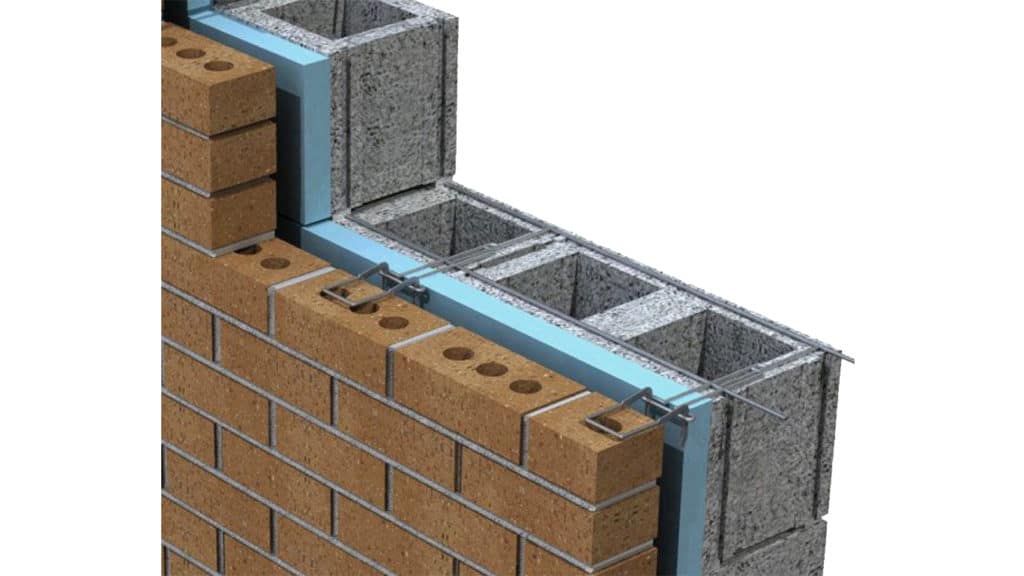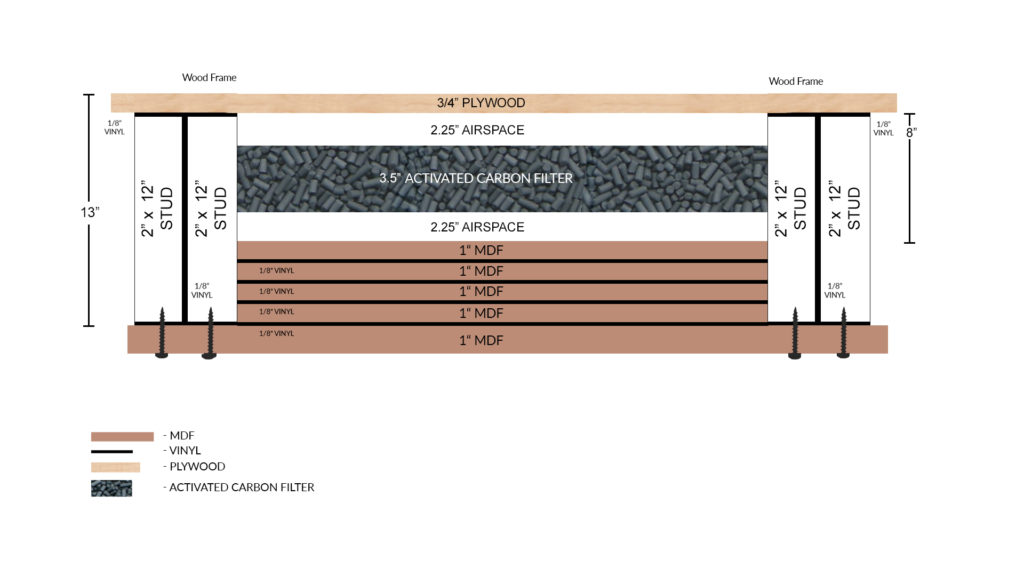Many new studio designs have become available since this blog was posted. We have updated some of these changes. Updated on October 25th, 2019
Sound Energy: Two Types
We have two major types of sound energy we must deal with when it comes to recording studio walls. First, we must deal with the sound energy created by outside our studios such as trains, planes, and cars. This is called noise. The energy within our studio must be managed and be contained as much as possible within the recording studio walls. To accomplish both of these objectives, we must turn to vibrational acoustics for answers for the noise issues and airborne energy for the energy inside our rooms.
Gas vs. Solid
When sound energy travels through the air from human activity, it strikes our room’s surfaces. At the moment of impact, it is transformed from an energy wave suspended in the air to a vibration traveling through a solid material. The energy in air or gas is different in many ways from a solid when it comes to vibrational energy. We must realize the difference between these two energy forms in our studio walls.
Recording Studio Walls – Vibrations Or Oscillations
Vibrations are repetitive and if you will, the oscillatory response of any mechanical system. The rate of the vibration cycles produced by our sound wave oscillation is termed ” frequency”. If we look at repetitive motions that are long and occur at lower frequencies, we call these oscillations. This same behavior at higher frequencies is called vibration. Vibration and oscillation signatures are similar.
Wall – Mechanical System
Our recording studio walls are a mechanical system. They move because of vibrations. They have a resonant frequency at which frequencies above the frequency of resonance are absorbed and below are not. We want to lower the resonant frequency of our recording studio walls, not only for outside noise coming in but also from studio noise leaking out into adjacent rooms. We must design for the proper studio walls and the position of a studio wall.
Sound Energy Vibration: https://examples.yourdictionary.com/examples-of-sound-energy.html
Barrier Layering
The way we slow vibrations down is by putting individual barriers in front of them. These materials or barriers must have a different density or weight to them. We want to make the vibration work really hard to get through some materials and maybe not as hard through others. Look at Kit Kat candy bar. Bite off the end. Notice all the different layers of materials. These candy bar layers are made of just two or three different materials. To slow vibrations down, we need many layers of different types and weights of “sugar” when are designing our studio wall.
Noise Barrier: https://en.wikipedia.org/wiki/Noise_barrier
A layered Approach
Arrangement and assembly processes of one’s chosen layers must also be considered. Depending on the amplitude of the outside energy trying to get in, we may use different materials in different layering arrangements. If we are trying to minimize lower frequency vibrations, we may choose a completely different approach in materials and the assembly or layering of those materials than if we are dealing with the middle or higher frequency range.

Low-Frequency Barrier Technology
Material Types
What kind of materials can we use? What are good “layers” to use? Concrete is one, along with steel. Lead is a good layer. Vinyl can even be a layer of material in our studio walls. The air we breathe and even the insulation we put in our walls to keep heat and cool in and cold or hot temperatures out can be considered as a potential layer. Plant materials are popular today. Cork would be an example of this category. We have to consider the position of the studio walls in any design we do.
Step On The Scale
Now that we have our materials, we must look at the densities or weight per square foot of each one of our materials. We want to arrange our materials in a manner that reduces vibrations as the energy travels through the wall. If we put barriers in front of the vibration that is different densities, we can cause the vibration to slow down at different rates and levels. This process produces a number called a sound transmission loss rating or STC. This would be called a barrier studio wall.
Sound Transmission Loss – STC
STC is the number assigned to our layering process about how well we did select materials and arranging them in ways that reduced the vibrational energy we were fighting against. Whether a car or a dog bark, we choose materials to isolate those frequencies. The STC number we created with our wall layers is our sonic report card. With studio wall construction, an STC of 75 would be great and an STC and a sound transmission loss of 35 would be bad. Let’s build a wall to see how all this works.
Low Frequency Vehicles
Our goal is isolation from cars and trucks in our studio. These are low frequency producing devices with long wavelengths. We need a big “gun”. Let’s choose an STC of 75 as our isolation goal. First, let’s use concrete. Not poured concrete but “cinder block” as it is called in the trades. You know the one with the two holes in them. We now have two layers. We have concrete and air. Remember, air is a layer that we can use.
High Mass First
Inside the two holes that are filled with air, we will place a sound-absorbing material such as building insulation. Now, we have concrete, air, and building insulation materials to bring our total to three layers. On the outside surface of our concrete blocks, we place six inches of Thermafiber. Thermafiber is a material that is spun from the slag in steel mills. It is the slag left in the big bucket that pours the liquid steel into ingots and then is spun into a “fabric”. It can be used within our studio walls but we must position.
Drywall Sandwich
Drywall is a high-density finish type material. Let’s elevate its performance on our STC chase, by placing a vinyl high mass material between two layers of drywall each with different thicknesses or densities. Vary the drywall thickness on the inside of our studio walls by selecting 1/4″ and 3/8″ thickness. For the outside wall, let us use 3/8″ and 1/2″ with a vinyl layer. Also, vary the thickness of our vinyl between each of our drywall sandwiches.
We now have a wall that is over 20″ thick, with different materials of different densities. A vibration that moves through this damping sandwich would act like a car that is stopped on the freeway. You move forward a little then you stop. You start again, but this time slower. Eventually, after 4 hours on the LA freeway, you run out of gas or patience. As far as vibration is concerned in studio acoustics, we will take either one.
In Summary
So I hope that helps you. If you have any questions at any time I am always on hand to help answer them. Leave them in the comments section or email me at info@acousticfields.com. If you would like to learn more about room acoustics please sign up for our free videos and ebook by joining the mailing list here. We send room tuning tips and things for you to test in your room every Wednesday. They are easy to follow and really help you enjoy more of your music.
Thanks and speak soon
Mike







Thanks for your insight!
I had 12″ block 9′ walls in the last house I built, but they were mostly underground with black waterproof coating and pink foam insulation and every other cell in theory was pumped with concrete. You could turn it up to “11” and not hear a thing outside with modified Klipsch cornerhorns. I had sheet rock and insulation with flat 2x framing (glued and screwed) on the inside but wasn’t trying to do a real studio, and while quite good the room was too wide for cornerhorns. I will use your advice when I try again.